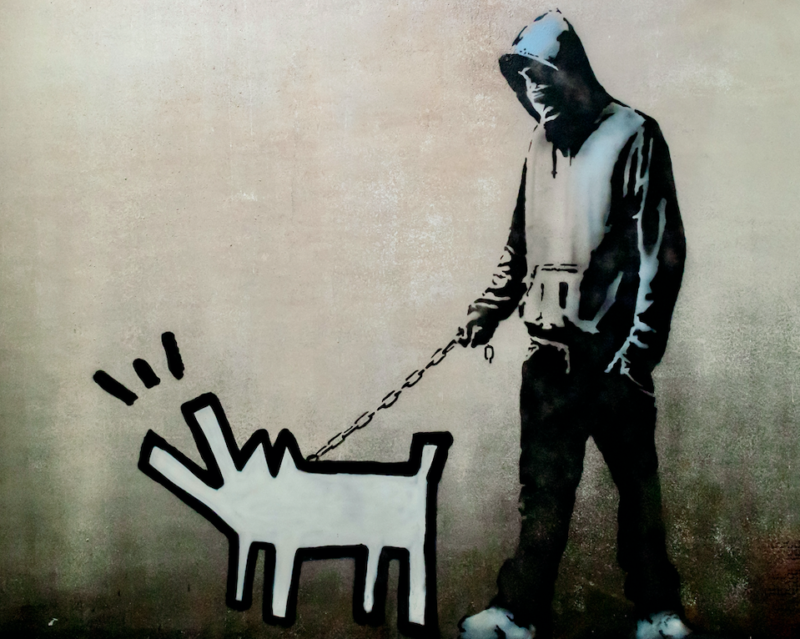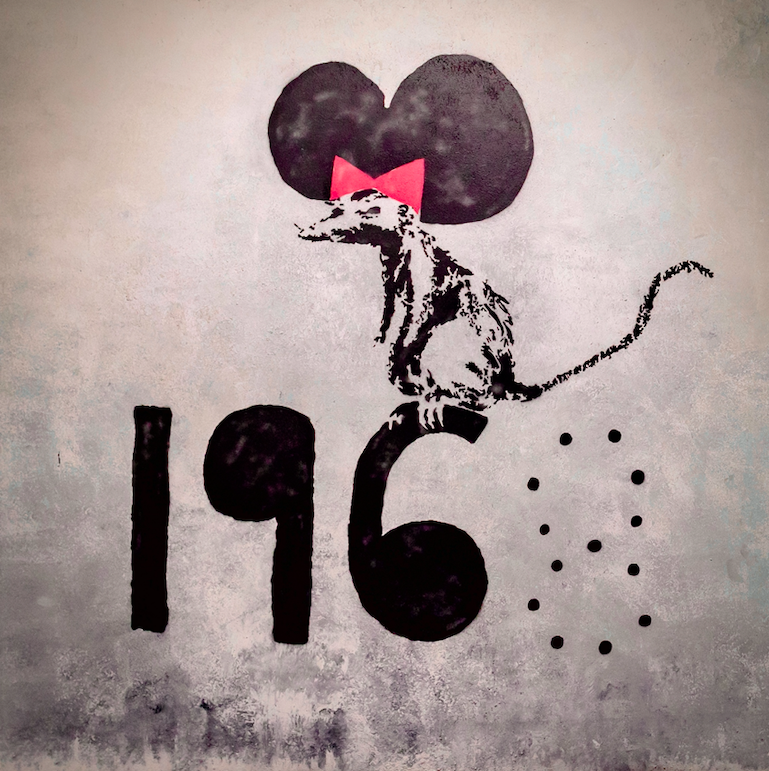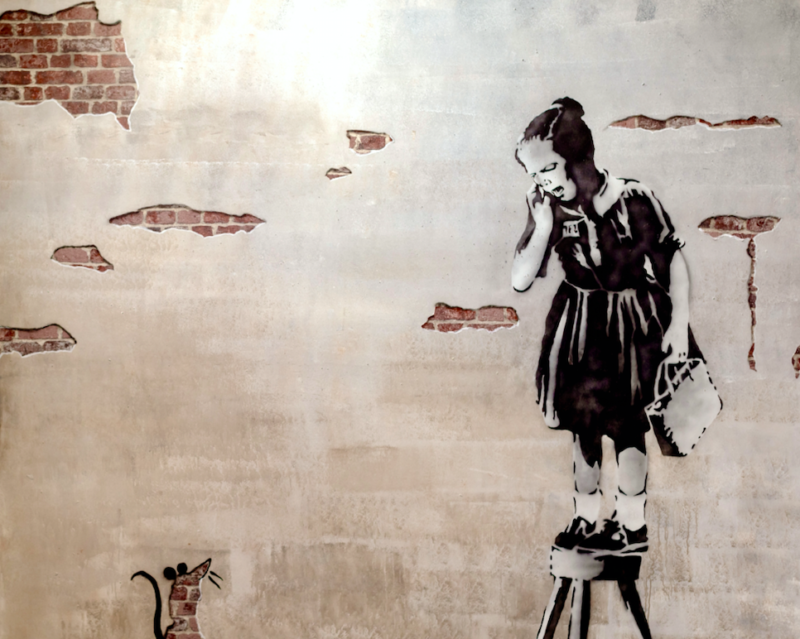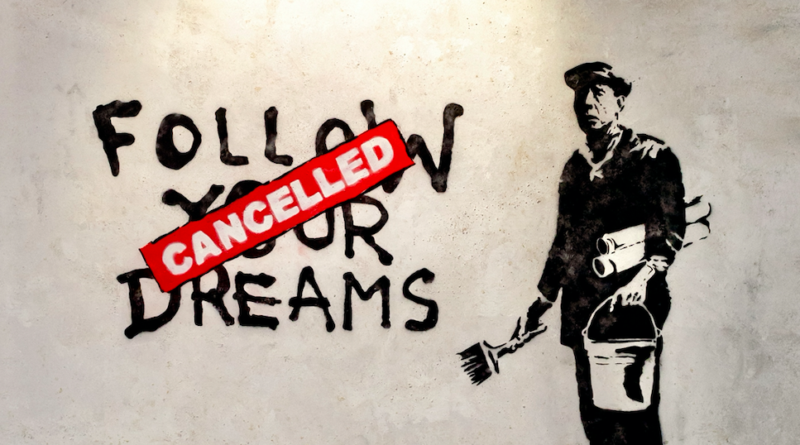INTERVIEW: At the Banksy Museum, it’s all about the experience
Image courtesy of the Banksy Museum / Provided by KSA PR with permission.
There’s a certain experiential quality to observing and appreciating street art. These graffitied tags and images populate the bricked sides of buildings and the cemented planks of sidewalks, beckoning passersby to see them, interact with them and sometimes watch as they are destroyed, removed, painted over or fade with time. Some street art is perhaps silly and intrusive to viewers — a momentary emitting of some artist’s present mood — while others are well-thought-out creations that demand introspection and consideration. Some are both.
Banksy is the name given to an anonymous street artist who has painted mostly stenciled pieces for decades and, in the interim, gathered a worldwide following. They appear to be an artist who originated in Bristol, England, but their exploits have taken them around the world, everywhere from North America to the Middle East and beyond. Some of their pieces are clever ruminations on the crazed life of the 21st century, while others are overtly political and serve as wake-up calls to communities and individuals.
As an artist, Banksy has featured crowned images of rats, depicted police officers embracing each other with a kiss, painted young girls looking hopelessly at red balloons flying away and showcased a meta-form of street art that centers the street artist in the narrative. Some of the pieces have been met with acclaim, while others have been destroyed and instigated public officials to decry the illegality of this art form, which can’t be considered an art form in their narrow mind.
Banksy’s identity remains hidden, their pieces given to the world with not much thought about the post-painting-process. So, it’s quite interesting to compile re-creations of Banksy’s work in a museum setting, but that’s exactly what’s happened at the new Banksy Museum on Canal Street in Downtown Manhattan. Now street art enthusiasts have the chance to take in these images and icons on a second-floor gallery space that is set up geographically rather than chronologically. Sure there’s the very good chance that Banksy would object to such displays, but the museum is a living, breathing historical document of an ephemeral art form that has temporariness as one of its qualities. The gallery essentially claims that permanence and posterity should capture this fleeting expression, much like the modern art museums re-create performance art that was clearly meant for a specific time and place.
At the center of the Banksy Museum is William Meade, its executive director, who recently toured the exhibition with Hollywood Soapbox.
“If I go online, I could find out what your last mortgage is,” Meade said. “I could find out your last six wives and all the rest of it, but the thing is, here’s a guy who has been around since the mid-1990s. He started in Bristol, and we can’t even say he’s a guy anymore. But it’s a movement. It’s not a guy; it’s a movement. Within the movement of him, there are various other street artists that replicate or help him out or work with him on some of these things because there’s no way that some of these could be done in one evening. There has to be a group of people that come in and work on it in some way.”
Some of these street artists who work in the same spaces and orbits as Banksy helped Meade and the team with the artfully planned museum space. Leaning on the street-art community was an idea of the museum’s founder, Hazis Vardar. Six years ago Vardar opened a Banksy exhibition in Paris, and he employed the help of street artists to bring the vision to life.
“They won’t say who they are,” Meade said about this helpful troupe of artists. “And as a result we came in and said, ‘Look, we need this and this and this,’ and they built the whole thing. So we would leave, and then we would come back.”
The layout of the museum, created in consultation with these artists, is quite unique. The museum appears to be tapping into the original spirit of these pieces and not being overly prescriptive on how audiences encounter the art.
“When you go to a museum, somebody tells you what’s important,” he said. “Somebody points to you and says, ‘Look at these pieces in a certain order, in a certain way.’ Banksy’s whole thing is that when you take the name of the artist out, when you take the history out, what happens is that you interact with the piece in a different way. When I go see the ‘Mona Lisa,’ I think, oh, there’s da Vinci. He did this, and I saw his drawings. And you come with a lot of baggage to it. It forces an interaction that you’re not used to having.”
Meade added: “The fact of the matter is we always say the most important thing being a human being is free will, and what’s the first thing we we’re willing to give away? It makes people really angry [not knowing who Banksy is]. I think that’s the beauty of it. What it does is it forces you to experience it in a different way.”
Meade said he is particularly fascinated by Banksy’s trip to New York City more than a decade ago. Every single day for a month the artist would make an artistic statement in mostly public spaces around the metropolitan area. “So here’s a guy out here doing artistry, and he’s considered a vandal,” he said. “We in society can’t incorporate it. Art is only here; art is only there. And if you put it on the side of the subway, that’s not art. You’re defacing something.”
This month-long exhibition was called “Better Out Than In,” and a re-creation of many of its pieces is prominently displayed in the New York section of the Banksy Museum.
“I’m going to put this there, and you’re walking by, and you’re experiencing it,” Meade said. “You don’t know where it’s going to be. You don’t know how it’s going to be. So there are 30 actual pieces put around New York at that point. Out of the 30, there are three left.”
How these pieces survive (or more likely don’t) and how they are commercialized (even in a museum setting) are part of the story of Banksy. In some ways, these pieces of street art become later examples of performance art, with the artist — whomever they may be — sitting back and watching how the world deals with their political statements.
“It’s a different way to approach art,” Meade said. “It’s a different way to engage people in art. The other part of it is you take very simple subject matters and put them next to each other. Remember, you’re walking down the street, so you have seconds. The amount of time that you’ll stand and stare at these things along the street varies. So what he’s done is they’re very poignant and very clear imagery. … It’s simplistic. It gets its point across in a very quick way. We can really call it activism art because what it does is it creates immediate reaction.”
By John Soltes / Publisher / John@HollywoodSoapbox.com
Click here for more information on the Banksy Museum.




